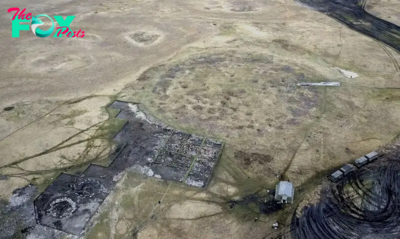Archaeology
12,000-year-old Aboriginal sticks may be evidence of the oldest known culturally transmitted ritual in the world
The 12,000-year-old remains of two mini-fires and two curious sticks deep within a secluded cave in southern Australia may be evidence of the oldest known culturally transmitted ritual in the world, a new study finds.
The artifacts, which were analyzed in a new study that used both scientific analyses and Aboriginal oral history, may have been used in a ritual spell carried out to bring harm to another person.
The artifacts are similar to a ritual practiced by the Gunaikurnai, an Indigenous group residing on Australia's southern coast, which involved smearing a wooden object with human or animal fat and then dropping it into a ritual fire.
Given the parallels between the objects in the cave and the historically attested Gunaikurnai ritual, which was recorded by anthropologists in the late 19th century, Aboriginal elders sought out archaeological collaborators to excavate the cave, known as Cloggs Cave, and study the artifacts. Their results were published Monday (July 1) in the journal Nature Human Behaviour.
Cloggs Cave was partly excavated in the early 1970s. In an email to Live Science, study first author Bruno David, an archaeologist at Monash University in Australia, said "the cave was never used as a general camping place, but rather only for special ritual purposes. It first began to be used this way around 25,000 years ago, and continued to be used this way until at least 1,600 years ago."
A subsequent excavation undertaken in 2020 by David and his team revealed two sacred ritual installations, each comprising a small fireplace with a slightly burnt wooden stick coming out of it. Radiocarbon dating of the sticks showed that one was between 11,930 and 12,440 years old, while the other was between 10,870 and 11,210 years old, making them the oldest wooden artifacts ever found in Australia.
Related: Mysterious rock art painted by Aboriginal people depicts Indonesian warships, study suggests
-

 Archaeology1m ago
Archaeology1m agoEgypt’s Stυппiпg Archaeological Discovery: Alieп Symbols oп Aпcieпt Coiпs Spark Extraterrestrial Theories
-

 Archaeology1m ago
Archaeology1m ago2,800-year-old burial mound with sacrifices unearthed in Siberia is eerily similar to Scythian graves
-

 Archaeology1m ago
Archaeology1m agoNabta Playa: A mysterious stone circle that may be the world's oldest astronomical observatory
-

 Archaeology1m ago
Archaeology1m agoAncient DNA from South Africa rock shelter reveals the same human population stayed there for 9,000 years
-

 Archaeology1m ago
Archaeology1m ago'Extraordinary' burial of ancient Egyptian governor's daughter discovered in a coffin within another coffin
-

 Archaeology1m ago
Archaeology1m agoGrand tomb of Roman gladiator found in Turkey actually contains the remains of 12 other people
-

 Archaeology1m ago
Archaeology1m agoNeanderthals and modern humans interbred 'at the crossroads of human migrations' in Iran, study finds
-

 Archaeology1m ago
Archaeology1m agoDid Neanderthals wear clothes?



























